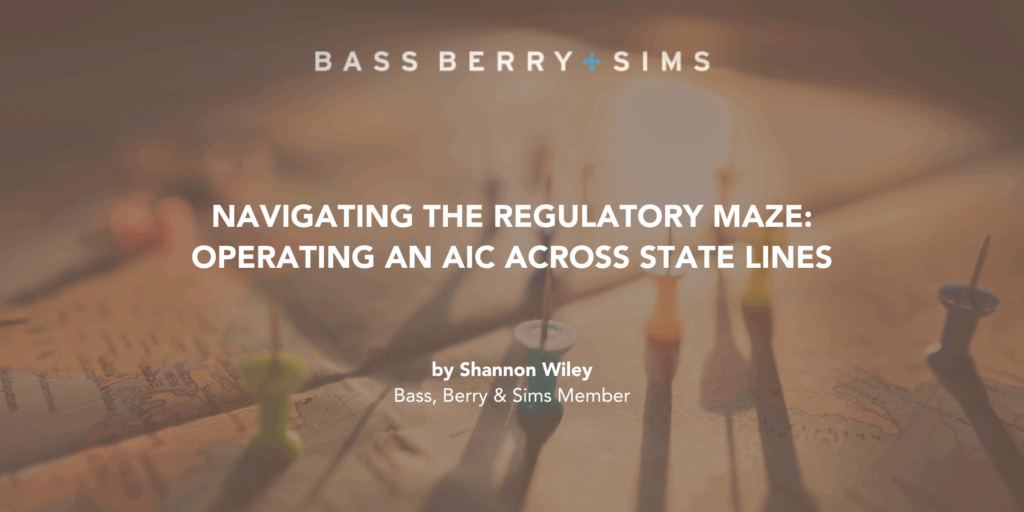Operating an Ambulatory Infusion Center (AIC) involves navigating a complex web of state and federal regulations. The laws are intertwined and as a result, AIC operators must consider the interaction of the laws when going into a state. Outlined below is a brief overview of some of these laws, an examination of the interplay, and how state analyses vary.
For example, a Nevada AIC not owned by physicians that submits claims to Part B under the National Provider Identifier (NPI) of its medical director—when meeting all “incident to” requirements—cannot replicate that model in California because of California’s corporate practice of medicine (CPOM) laws. That same AIC could replicate the Nevada model in Arizona as long as it obtained an Outpatient Treatment Center permit, which acts as an exception to AZ CPOM rules.
A Kentucky AIC that relies on nurse practitioners (NPs) practicing independently will need to obtain an ambulatory infusion center license. If that same AIC opens a location in Tennessee, it will find onerous collaboration practice requirements but no license requirement. However, if that AIC is tempted to bill under the NPI of its collaborating physicians in Tennessee, the AIC will likely run afoul of the state CPOM prohibitions.
A Texas AIC may use NPs to supervise infusions billed to Medicare Part B; but if the NP prescribes medication, a collaboration relationship with a physician is required. If that AIC decides it would prefer to just hire a physician to supervise and bill Medicare Part B, it would violate the state’s CPOM laws. However, in Mississippi, physician employment would be acceptable, but more collaboration might be needed if the NP were used instead.
AIC owners looking for a consistent operational approach will be frustrated by this kaleidoscope of laws that changes shape and color as you move from state, provider type, and ownership structure.
Medicare Part B and “Incident To” Billing
Virtually every AIC submits Medicare Part B “incident to” claims. Incident to billing requires, in part, that the infusion be an integral part of the “rendering practitioner’s” course of treatment of the patient. This requirement is often not well understood or implemented.
The “rendering practitioner” is the person whose NPI is being used for the submission of the claim. The rendering practitioner is not the referring practitioner. To meet the requirement, the rendering practitioner: 1) must establish and continue to be involved in a course of treatment of the patient, and 2) provide direct supervision of the infusion.
In establishing and maintaining a course of treatment, we often see infusion providers incorrectly rely on the referring provider’s treatment and not establish a course of treatment on their own. For supervision, this can be done by the rendering practitioner being immediately available in the same building as the AIC or through audio/ visual means.
State Licensure Considerations
The majority of states do not require facility licensure to operate an AIC. Kentucky and South Carolina, for example, are states with licensure requirements that are not particularly onerous. In comparison, New York not only licenses healthcare facilities like AICs, but imposes a lengthy and complicated certificate of need process on licensure applications.
In states with facility licensure requirements, there are often exceptions for physician-owned clinics. New York is an example of this and as a result, AIC providers often engage in a “friendly PC” model in New York.
Despite general trends in licensure and exceptions, each state is unique. While Florida has a “facility license” requirement and exception for (among other things) a physician owned clinic, even physician clinics must obtain a different permit—the healthcare clinic establishment permit—because drugs are purchased and stored by the AIC.
Nurse Practitioner Collaboration Requirements
The role of NPs in AICs is significant, often involving the administration of infusion therapies, supervising administration, and providing evaluation and management encounters. However, AICs cannot use NPs uniformly across all states without meeting varied collaboration requirements.
While some states grant NPs full practice authority, allowing them to evaluate patients, diagnose conditions, and initiate treatments without physician oversight, other states require NPs to enter into collaborative agreements.
Collaboration requirements vary widely and may dictate specific protocols for patient care; prescribing authority; and oversight mechanisms such as proximity, minimum chart review, and maximum collaboration relationship requirements.
Corporate Practice of Medicine
Certain states prohibit the CPOM, which means that a company that is not owned by a physician cannot engage in the practice of medicine or employ physicians to perform medical acts. Of the states that have CPOM prohibitions, states like New York and California enforce the laws more frequently and interpret the prohibitions more specifically.
Stark Law
The Stark Law is complicated and not intuitive. It has many multi-pronged exceptions and is strict liability – meaning there is no intent requirement; if you make an honest error in your Stark analysis, you are still deemed to violate the law. Stark Law prohibits physicians from referring designated health services—which includes infusion drugs—to an entity with which the physician or his immediate family member has a financial relationship. Medical director or employment fees are examples of financial relationships, but the applicable exceptions to those arrangements are straightforward (requiring fees to be fair market value and not vary with the volume or value of referrals, among other things).
Where Stark becomes dizzying is with physician ownership in an AIC or affiliate. The in-office ancillary services (IOAS) exception most often applies, but it only protects limited self-referrals of a physician to his or her own solo practice or group practice. Therefore, if the physician has his or her neurology practice separate from the AIC, it is very unlikely referrals to the separate AIC will be protected. Even when IOAS is met, there are limitations on the locations in which the ancillary services can be rendered. This limits the ability for a group practice to open a remote location just to service infusions.
These examples demonstrate that the interplay between state licensure, CPOM legislation, and collaboration requirements make it impossible to consider laws in a silo. However, while intertwining state and federal regulations can make moving state, provider type, and ownership structure overwhelming, navigating the legal considerations for AICs is possible with the right approach and guidance.
________________________________________________________________________
About The Author
Shannon Wiley is a member at Bass, Berry & Sims. She focuses her practice on healthcare regulatory and transactional matters with a specific emphasis on the pharmaceutical industry specializing in specialty pharmacy, digital pharmacy and infusion providers. Shannon can be reached at swiley@bassberry.com.
WeInfuse is dedicated to keeping infusion simplified by streamlining workflows for home infusion, specialty pharmacies, and infusion centers. WeInfuse software enables infusion operators to operate efficiently, decrease burnout, maximize profits, and improve clinical outcomes.
For more infusion insights, tune into the WeInfuse podcast, download our magazine, and subscribe to our blog.
See how WeInfuse is saving infusion operators both time and money with our ROI Calculators.




